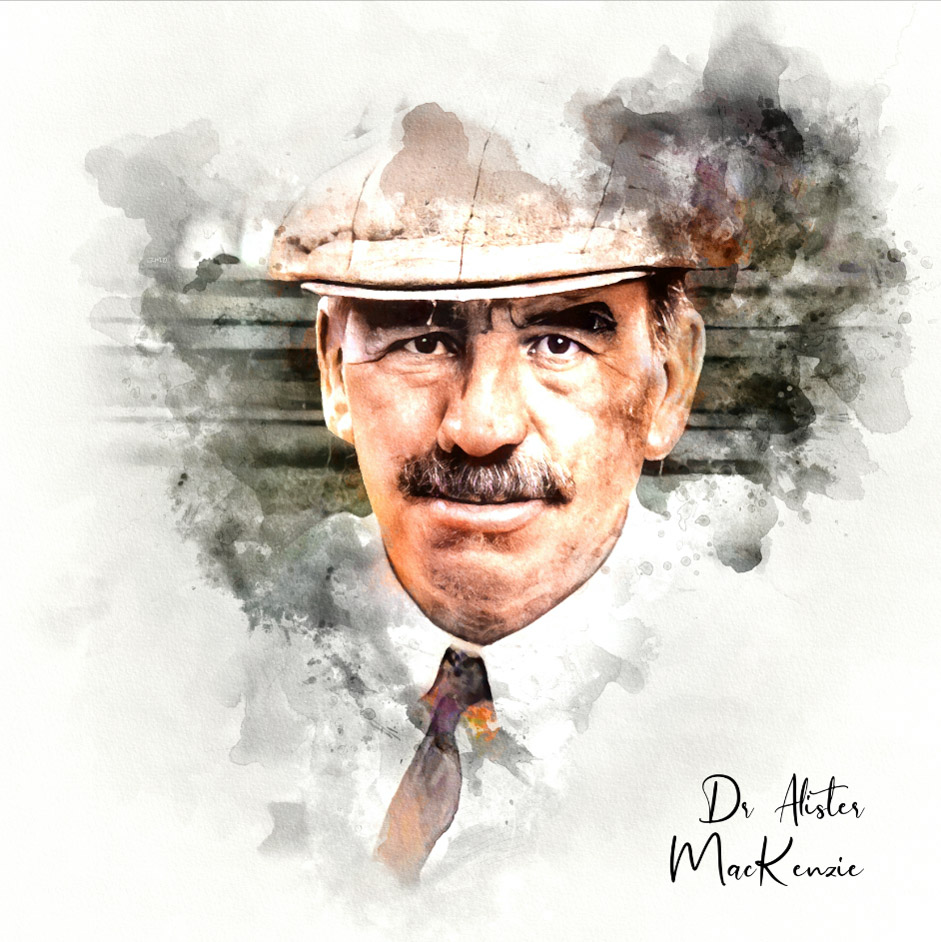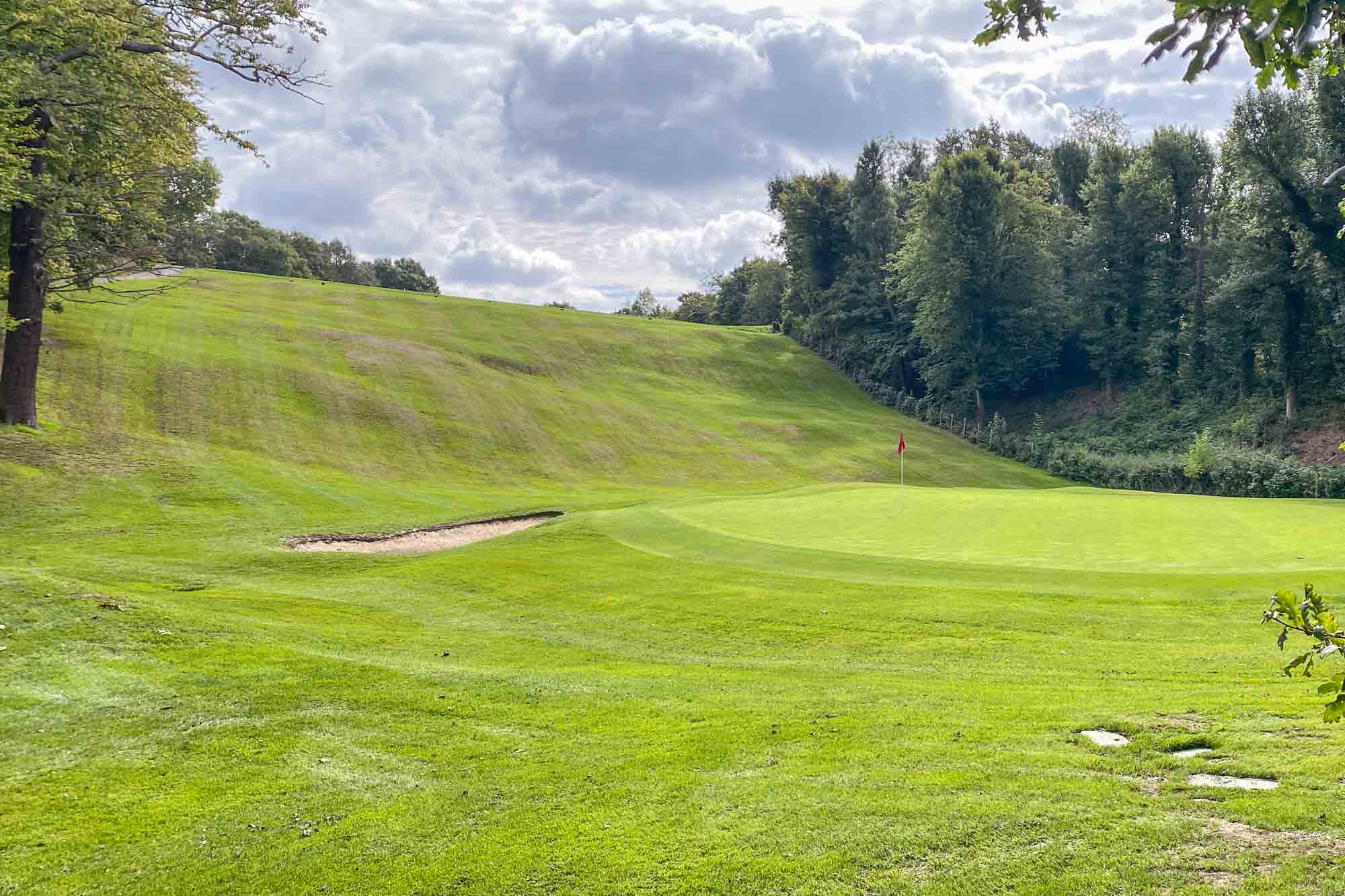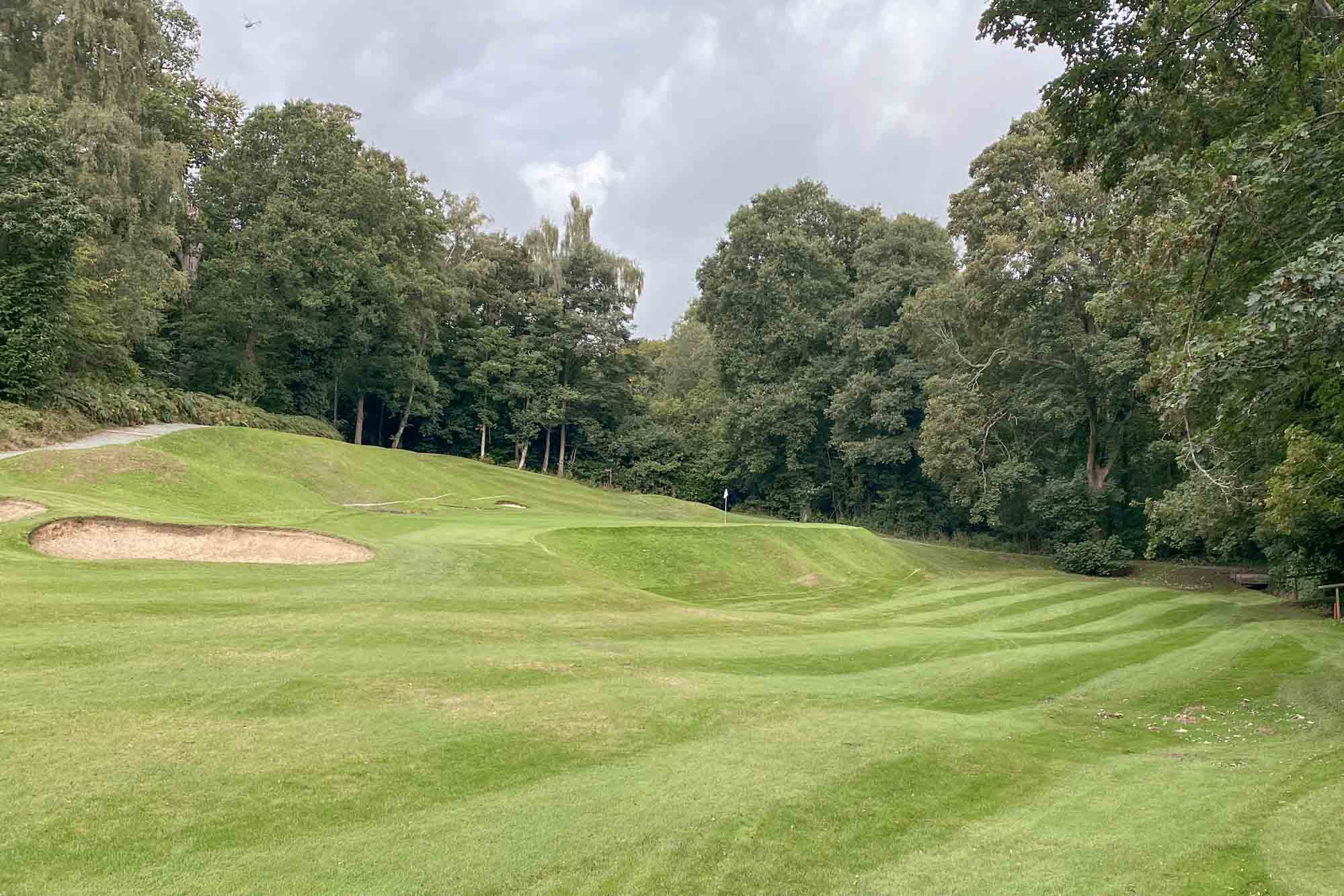Denham Golf Club

Overview
The renowned golf course architect, Donald Steel, is a member and past captain.
Planes, Trains, and Automobiles!
The club has its own railway station called Denham Golf Club. The train stops hourly from Marlybone in London taking roughly 30 minutes. The return journey takes about 15 minutes.
Another transport feature is an airstrip adjacent to the golf course. The planes take off and land over the 4th to 8th holes and the 13th to 17th holes!
The 10th plays over the entrance road. Not necessarily in play nor public, it is nonetheless a point of interest that three forms or transport impact the course.
Bernard Darwin's Review
The Middlesex County Times printed a review of the course on 26 August 1939 written by Harry Rountree.
The 2nd is called a splendid hole, the 6th a good hole, the 8th a real good short hole and the 11th - a good hole with a thrill to it.
Waxing lyrical, he states there is a no more picturesque hole in the world than the 12th adorned with a carpet of bluebells and calls it a dream of beauty. He also mentions that the 13th was the dullest hole in the world but the new tiger tee with a shot over a deep gravel pit has put a kick into it. Why it was allowed to revert back, we may never know... it would seem the regression is only temporary.
Golf Course Review
The Denham Golf Club is a traditional private members club located just inside the M25 near the M40 Junction. The Denham Aerodrome borders the course on two holes but it is the taxidermy in the clubhouse that the club is perhaps most famous for!
In 1911, 250 acres of Hill Barn Farm was acquired to layout Denham Golf Club. Used previously for farming the soil was identified as free-draining gravel. Harry Colt designed the course and Mr. Turner was the first keeper of the green. As mentioned in the press, the plan was not to erect many bunkers but later place them where experience showed they were required. It seems there were 27 holes planned – 18 to open in October 1911 and the additional 9, to open for play in May 1912. Only 18 remain today.
The support for the club was immediate. In fact, the local rail station needed to extend the platforms to 300 ft to cope with the influx of London businessmen eager to get to the course. By October of 1912, adverts were put into the papers to fill vacancies for caddies, especially on Saturdays and Sundays.
A Harry Colt Routing… Almost
The course itself is a Harry Colt routing with a few exceptions. The 3rd hole played as a dogleg right over man-made mounds into the current area used as a driving range. The teeing ground and green site have remained but the fairway now hugs the OB fence line.
In Colt’s original layout, the current 15th played to the 16th green as a dog-leg left. There was then a short par 3 that then played from the current 16th green over the road to the current 17th tee. When James Braid was called in he added the current 15th green and current 16th tees – creating today’s 15th and 16th and losing Colt’s original par 3 16th.
The routing can be verified as the Denham Golf Club is in possession of a 1921 Harry Colt map detailing both the routing and bunkering. Interestingly, there appears to have been some reconstruction of the greens after their initial construction. For example, Hawtree & JH Taylor Ltd ran an advertisement in the late 1920’s showing off the 15th green which they claim to have both designed and built. There is advertorial evidence of claims having ‘remodelled the course’ prior to 1926.
Denham Golf Club – A Contrast in Styles
It is interesting to see the contrast in styles between James Braid’s (potentially Hawtree & Taylors) work and Harry Colt’s. The best example of this is the difference between the 15th and 16th greens. The 15th is a two-tiered, false fronted affair with bold and striking contours. The Colt 16th is a refined, elegantly contoured green that is as devious as it is beautiful.
The current bunkering couldn’t really be attributed to Colt nor Braid. Silent witnesses are seen all over the course, some of the almost penal Victorian sort. Braid’s (? – TBC) bunkering from the mid 1920s was striking and would be keeping with the work of most Golden Age architects at the time.
Musing on Denham Golf Club
The course is deemed to be a heathland but has developed a parkland character. The trees are at bay and the playing corridors still wide enough not to restrict play. The par 3 12th could be opened up significantly to tremendous effect. It was noted the planting of numerous trees along boundaries, tees and between fairways. Ornamental varieties have also been planted.
The 13th is an indifferent hole due to the original tee being to tree growth. The original tee played left of its current position over a quarry creating a Cape tee shot over an immense gravel pit. Reinstatement of this feature would easily rectify the weakest hole on the course.
It would also be of interest to see the inclusion of former quarry sites to create strategic intrigue. Depressions are a characteristic of the site and are clearly seen on holes 1, 2, 4, 8, 12, and 13. If they influenced play more directly and were allowed to encourage decision making some holes could be improved – with the 2nd being a prime example. Currently, all play is forced left due to the encroachment of trees and the quarry has essentially become part of the fairway. There is no suspense given to the player for a carry-over it nor is there any risk nor reward for taking it on from the tee. The current litigious climate and bordering OOB may be factors to consider, however, there is potential for adding strategic value relatively easily.
Denham Golf Club Conclusion
Denham Golf Club is full of variety and character. A stunning club with a warm and welcoming disposition. The course itself has everything you could want. The land is undulating but not hilly. It is free draining and plays firm and fast relative to other North London clubs. It would seem the nature of the club simply needs to be decided. It is screaming out to be a natural heathland but the next few years will be pivotal in determining whether it remains true to itself or fights to become something different.
Many of the holes could be improved with a reduction of bunkers. Imagining Denham Golf Club with Colt’s strategic bunkering strategy and mid-1920s Braid aesthetic is what keeps golf course architect aficionados awake at night. If you have a chance to play it – take it! It is an excellent course with some secrets still to be unraveled!
Denham Golf Club - Videos

Featured Architect: MacKenzie, Alister
As taken from his book, Golf Architecture, Alister MacKenzie felt the following were essential: The course, where possible, should be arranged in two loops of nine holes. There should be a large proportion of good two-shot holes and at least four one-shot holes. There should be little walking between...











